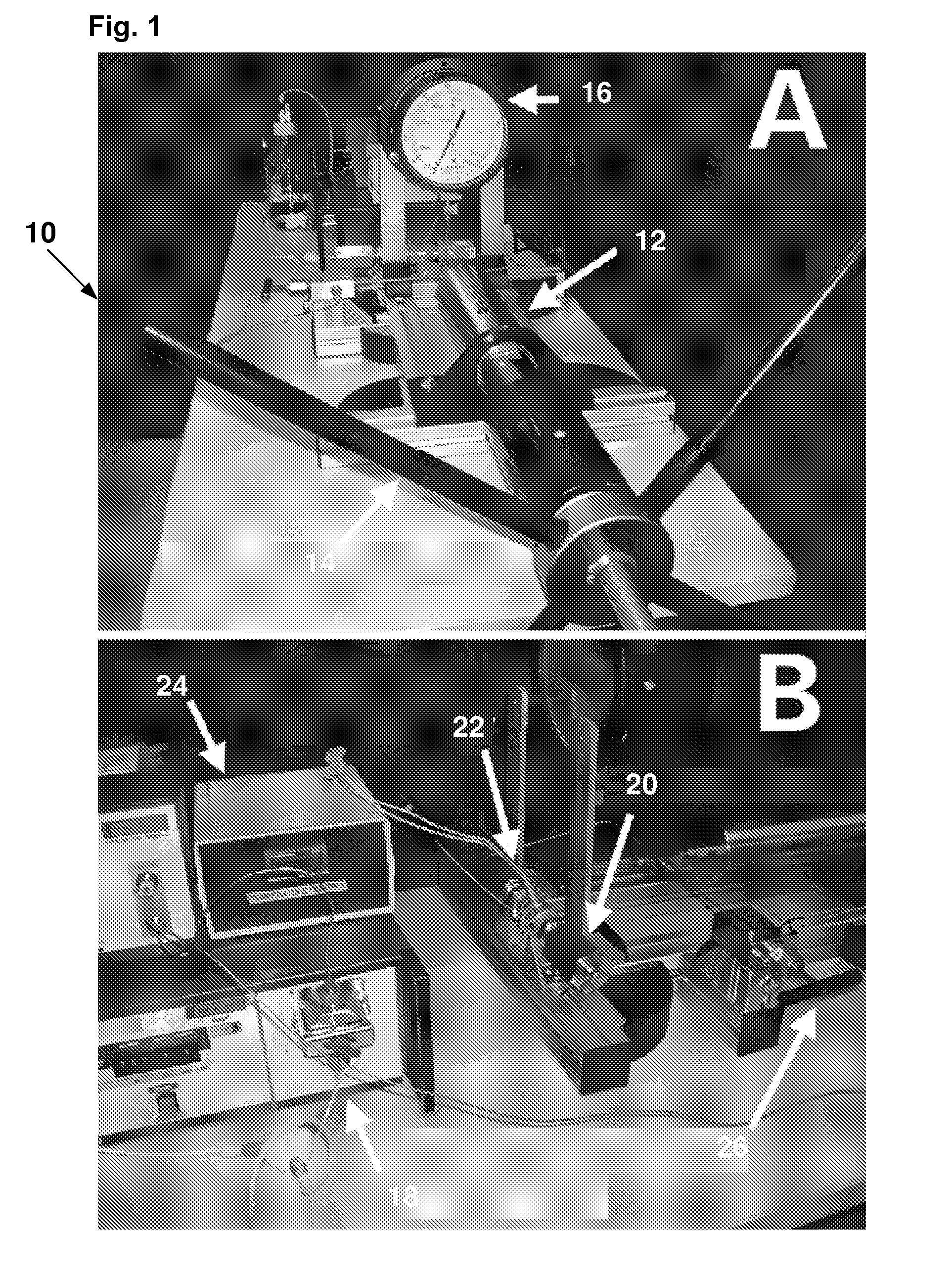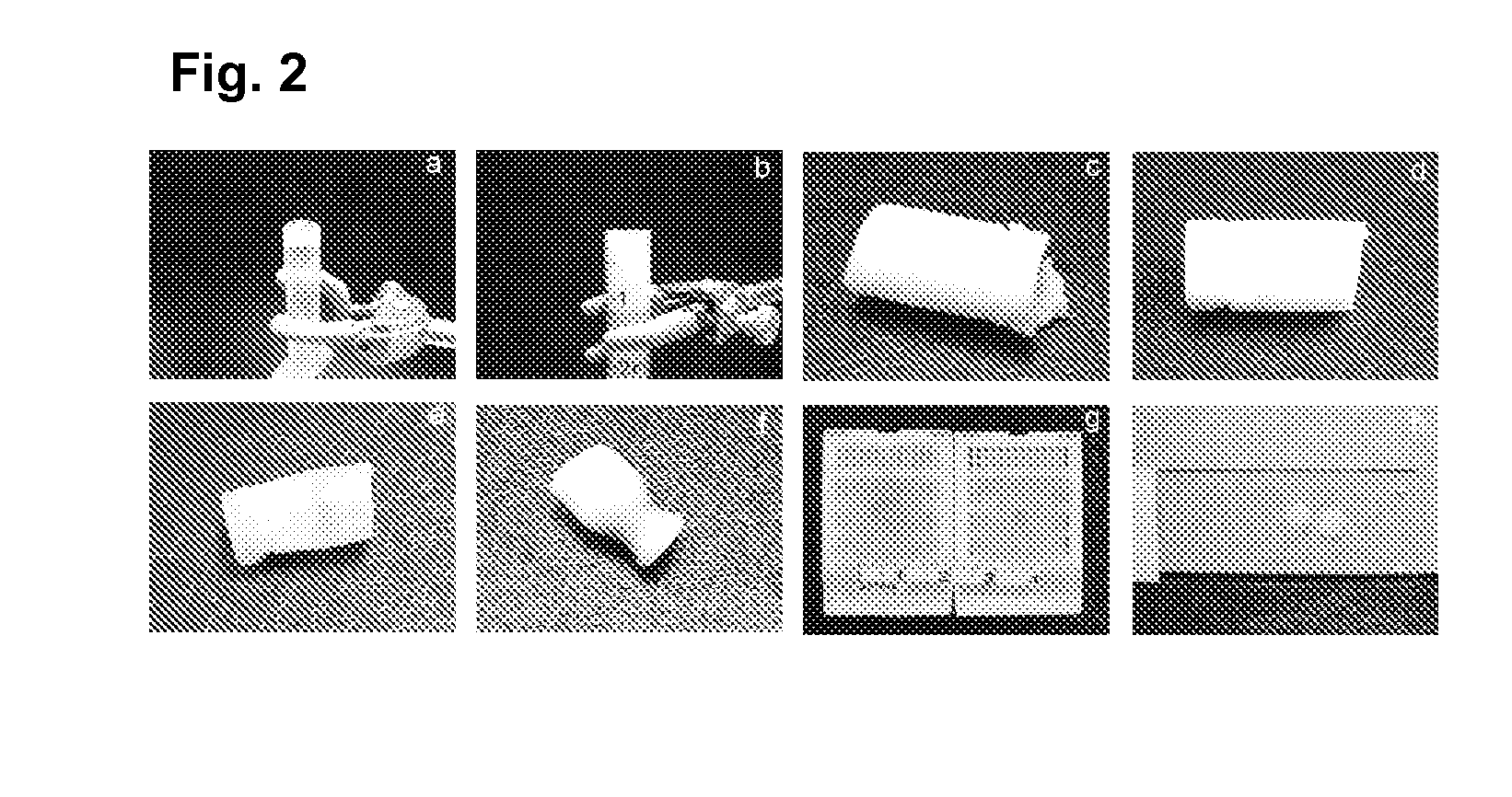Pressure-assisted molecular recovery (PAMR) of biomolecules, pressure-assisted antigen retrieval (PAAR), and pressure-assisted tissue histology (PATH)
a technology of biomolecules and molecular recovery, which is applied in the field of pressure-assisted molecular recovery (pamr) of biomolecules, pressure-assisted antigen retrieval (paar), and pressure-assisted tissue histology (path), can solve the problem of slow perfusion of solvents in the rate-limiting step of tissue histology processing, and achieve the effect of facilitating the use of ffpe tissue, restoring the antigenity of antigen
- Summary
- Abstract
- Description
- Claims
- Application Information
AI Technical Summary
Benefits of technology
Problems solved by technology
Method used
Image
Examples
example 1
Pressure-Assisted Molecular Recovery (PAMR) of Lysozyme from Tissue Surrogate
[0084]The following is a description of the PAMR of the lysozyme protein from a tissue surrogate, which is used as a model system to study the behavior of FFPE tissues.
[0085]Materials: A tissue surrogate is a model system used to study the behavior of FFPE tissues. Hen egg white lysozyme, SDS, and Tris buffer were purchased from Sigma-Aldrich Chemical Company (St. Louis, Mo.). Aqueous 37% (w / v) formaldehyde and xylene were purchased from Fisher Scientific (Pittsburgh, Pa.). Absolute ethanol was purchased from Pharmco-AAPER (Brookfield, Ill.) and Paraplast® (paraffin) tissue embedding medium was purchased from Oxford Labware (St. Louis, Mo.).
[0086]Formation of Tissue Surrogates: The tissue surrogates were formed by mixing a solution of lysozyme at a concentration of 150 mg / ml in deionized water with an equal volume of 20% phosphate-buffered formalin using the following procedure. The end of a 2-ml disposable...
example 2
The Effect of Different Elevated Hydrostatic Pressures and Temperatures on the Extraction of Protein from Tissue Specimens
[0095]Samples of the lysozyme FFPE tissue surrogate (1.5 mg each) were rehydrated and resuspended in 20 mM Tris HCl buffer, pH 4, containing 0.2 M glycine and 2% SDS. When heated at 80° C. for 2 hours at ambient pressure, approximately 60% of the total protein was extracted from the lysozyme surrogate (Table 1). These protein extraction conditions were chosen for their extraction efficiency. However, when analyzed by SDS-PAGE, the total extract was highly cross-linked, with the total protein content corresponding to approximately 20% monomeric, 22% dimeric, 18% trimeric, 15% tetrameric, 12% pentameric, and 13% hexameric species (FIG. 4A, lane 1, and Table 1). In contrast, when the surrogate suspension was heated at 80° C. for 2 hours at elevated pressures (3000 bar or 43,500 psi), 100% of the protein was recovered in the soluble phase. In addition, complete rever...
example 3
The Effect of Buffer pH on the Extraction of Protein from Tissue Specimens at Elevated Hydrostatic Pressure
[0098]The inventors previously determined that when tissue surrogates were heated in buffer solutions at 80° C. for 2 hours at ambient pressure, the protein extraction efficiency was dependent upon pH, with 60% of the total protein extracted at pH 4, 51% at pH 6, and 49% at pH 9 (Fowler et al. Laboratory Investigation 87:836-846, 2007). In addition, the protein was observed to be highly cross-linked for all three pH values. To determine the effect of elevated hydrostatic pressure and pH, samples of the lysozyme FFPE tissue surrogate (1.5 mg each) were rehydrated and resuspended in 20 mM Tris HCl buffer (pH 4, 6, or 9) containing 0.2 M glycine and 2% SDS. When the surrogate suspensions were heated at 80° C. for 2 hours at elevated pressures (43,500 psi), 100% of the protein was recovered in the soluble phase, regardless of pH (Table 1). However, complete reversal of the formalde...
PUM
| Property | Measurement | Unit |
|---|---|---|
| pressure | aaaaa | aaaaa |
| pressure | aaaaa | aaaaa |
| pressure | aaaaa | aaaaa |
Abstract
Description
Claims
Application Information
 Login to View More
Login to View More - R&D
- Intellectual Property
- Life Sciences
- Materials
- Tech Scout
- Unparalleled Data Quality
- Higher Quality Content
- 60% Fewer Hallucinations
Browse by: Latest US Patents, China's latest patents, Technical Efficacy Thesaurus, Application Domain, Technology Topic, Popular Technical Reports.
© 2025 PatSnap. All rights reserved.Legal|Privacy policy|Modern Slavery Act Transparency Statement|Sitemap|About US| Contact US: help@patsnap.com



